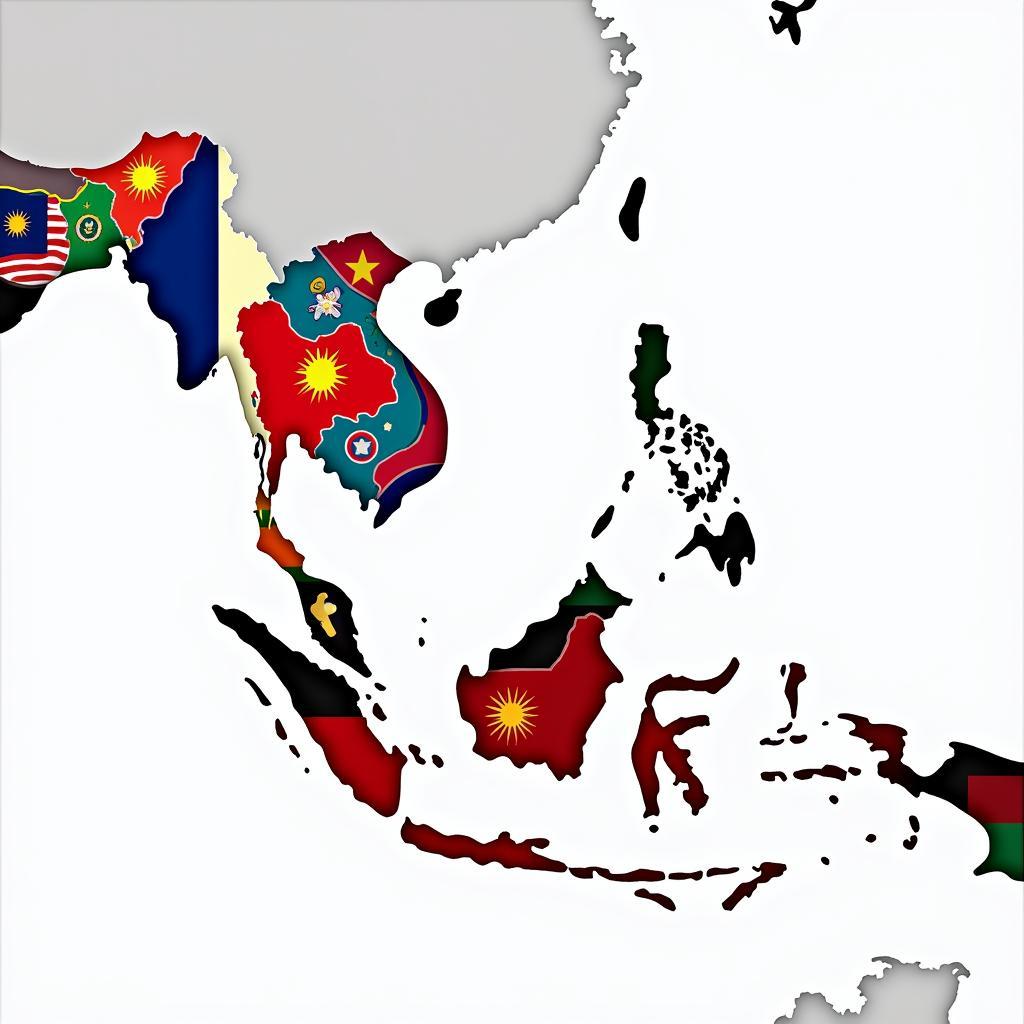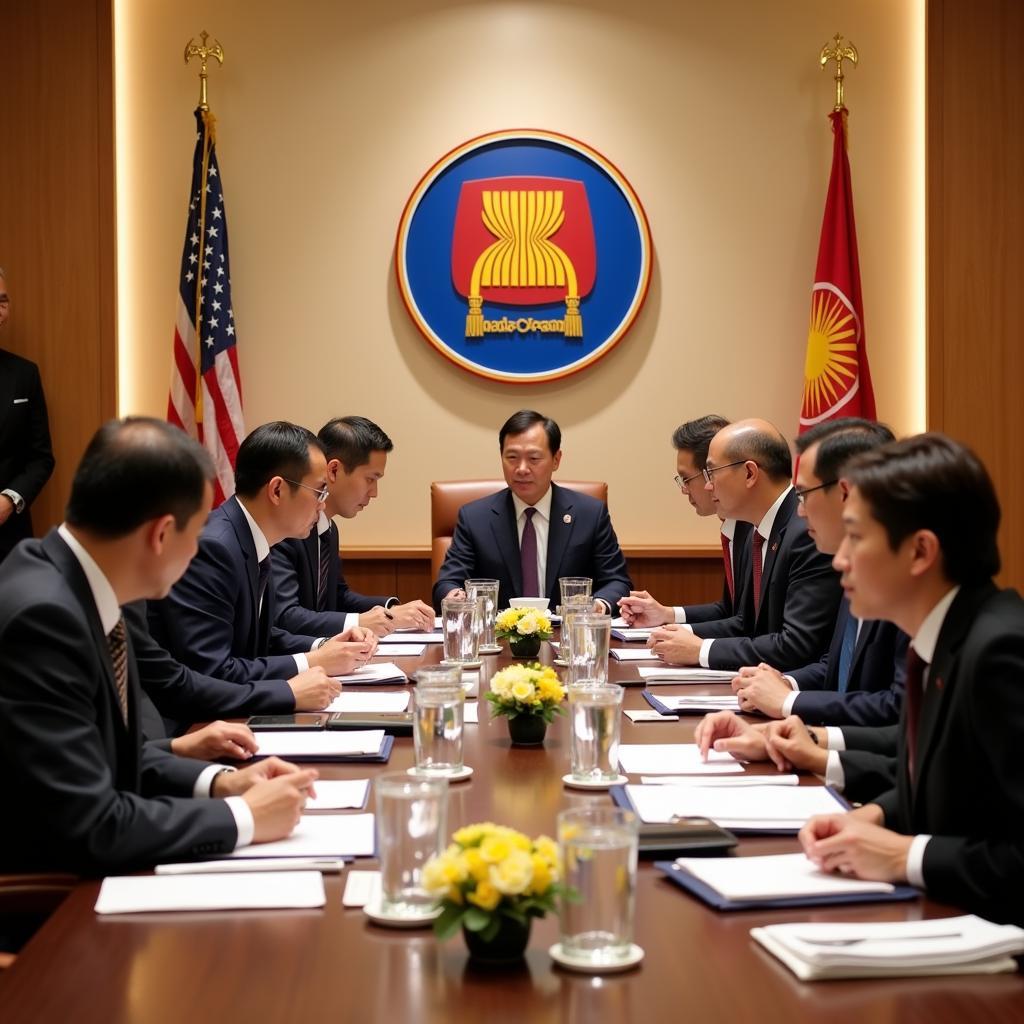As of 2019, the Association of Southeast Asian Nations (ASEAN) comprises ten member states: Brunei Darussalam, Cambodia, Indonesia, Laos, Malaysia, Myanmar, the Philippines, Singapore, Thailand, and Vietnam. These nations, diverse in culture, language, and history, are united by their geographic proximity and shared aspiration for regional peace and prosperity.
 ASEAN Flag Map
ASEAN Flag Map
Understanding the ASEAN Vision
Formed in 1967, ASEAN’s primary goal was to foster political and economic cooperation among its members. Over the decades, this vision has expanded to encompass a wider range of areas, including socio-cultural collaboration, environmental protection, and disaster management. The 2019 theme, “Advancing Partnership for Sustainability,” reflects ASEAN’s commitment to tackling global challenges collectively.
Economic Powerhouse in the Making
ASEAN’s economic significance cannot be overstated. With a combined GDP exceeding US $3 trillion, the bloc represents a dynamic market with vast potential. The ASEAN Economic Community (AEC) blueprint, adopted in 2015, aims to transform the region into a single market and production base, promoting free flow of goods, services, investment, and skilled labor.
 ASEAN Economic Growth Chart
ASEAN Economic Growth Chart
Cultural Tapestry of Southeast Asia
Beyond economic prowess, ASEAN nations boast a rich tapestry of cultures. From ancient temples to vibrant festivals, each country possesses a unique heritage reflected in its art, music, cuisine, and traditions. ASEAN encourages cultural exchanges to promote understanding and appreciation of this diversity.
Challenges and Opportunities for ASEAN
Despite its achievements, ASEAN faces challenges such as territorial disputes, political instability, and economic disparities among member states. However, the organization’s commitment to dialogue and consensus-building offers hope for peaceful resolutions. Furthermore, ASEAN’s strategic location and growing middle class present immense opportunities for trade, investment, and tourism.
ASEAN in 2019: A Year of Progress
The year 2019 marked another significant year for ASEAN. The bloc continued its efforts to implement the AEC blueprint, enhance regional connectivity, and promote sustainable development. Initiatives such as the ASEAN Smart Cities Network and the ASEAN Single Window are testaments to the region’s commitment to innovation and integration.
 ASEAN Summit 2019
ASEAN Summit 2019
Conclusion
ASEAN’s journey is a testament to the power of regional cooperation. The ten member states, as of 2019, stand united in their pursuit of a peaceful, prosperous, and integrated Southeast Asia. As the bloc continues to navigate challenges and capitalize on opportunities, it remains a beacon of hope and a model for regional integration globally.
Frequently Asked Questions (FAQs)
-
What is the primary purpose of ASEAN?
- ASEAN’s primary goal is to promote peace, stability, and economic prosperity in Southeast Asia.
-
How many countries were part of ASEAN in 2019?
- ASEAN consisted of ten member states in 2019.
-
What are some of the key economic initiatives of ASEAN?
- The ASEAN Economic Community (AEC) blueprint is a major economic initiative aimed at creating a single market and production base.
-
Does ASEAN play a role in addressing regional challenges?
- Yes, ASEAN actively promotes dialogue and cooperation to address issues like territorial disputes and natural disasters.
-
Where can I find more information about ASEAN?
- You can visit the official ASEAN website or contact us at aseanmediadirectory@gmail.com for further information.
Need Assistance? Contact us at:
Phone: 0369020373
Email: aseanmediadirectory@gmail.com
Address: Thon Ngoc Lien, Hiep Hoa, Bac Giang, Vietnam.
Our customer support team is available 24/7.
